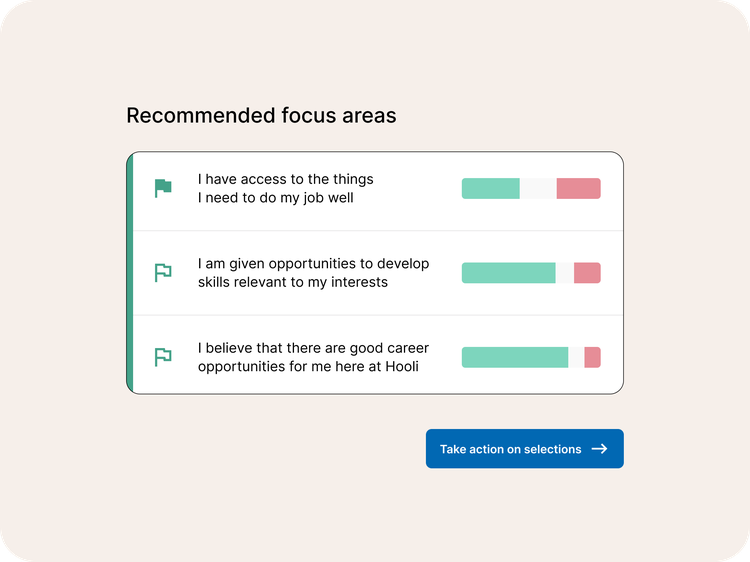
Acting on employee survey results: How to find focus

Written by

Director of People Science, Culture Amp
Do you "multitask" often because you think it allows you to get more done? Research summarized nicely in this APA article finds that individuals can lose up to 40% of their productivity. This means that when you multitask, you take more time to complete tasks and make more errors when trying to do more things at once. In that sense, finding focus in your work will enable you to be more productive.
This applies to not just individuals but also organizations. A study of 1,800 global executives from Strategy& found that as an executive team’s priority list grows, the company’s revenue growth declines relative to its peers.
I have worked with organizations for years, helping them capture, analyze and act on employee feedback. Commonly, executive teams will identify three to five "focus" areas, each with a list of actions. Yet, when you look at the list and the resources available, there isn’t much focus. This lack of focus usually results in resources being spread too thin, broken lines of communication, and little being done before the following survey. The resulting lack of action usually leads to "lack of action fatigue" – in which employees stop responding to surveys because they don't believe that their feedback will have any impact on the organization.
At Culture Amp, we take great pride in learning from our customers. When acting on employee feedback, a clear focus on just one or two areas seems to differentiate the organizations that can drive effective change from the ones that aren't. Focus enables organizational alignment, speed in action, and cross-business collaboration.
If you are struggling to help your organization focus and take effective action following an employee survey, don't worry, you are not alone.
Three key reasons organizations struggle to find focus
-
Disconnected data
Capturing large amounts of employee feedback is easier than it ever has been. However, many still use surveys and systems unfit for purpose or lack a clear purpose or goal. Leaders are often left navigating disconnected data, trying to find a place to begin parsing the story. -
Fear of picking the wrong thing
Often executives select multiple focus areas believing it increases their odds of picking the right one. More often than not, this divides attention and energy, sows confusion about what is most important to the organization, and slows the momentum of everything. -
Overestimating what we think we can achieve
Research suggests that at least 80% of humans have an overly optimistic view of the future. Tali Sharot describes in her research how humans are more likely to overestimate positive events occurring in the future. So, leaders are primed to take an optimistic view of what can be accomplished at once when they are presented with numerous potential focus opportunities following an employee survey.
Without focus, you’ll likely end up with just a long list of disconnected actions. Instead, I encourage you to find one thing to start with.
How to help your team find focus and take action

-
Leverage advanced analytics to guide focus
Use employee feedback tools like Culture Amp to calculate a real-time impact analysis to help teams find focus. Culture Amp even has an embedded focus agent at every reporting level in the organization that provides clear guidance on potential opportunities for focus. -
Align
Encourage leaders to evaluate feedback against organizational objectives and prioritize the most aligned focus area. This is an excellent way of demonstrating the value of employee feedback to all employees and ensures an impact on business success. -
Vote
If the first two steps don’t get you to a clear focus, a simple vote with the team can get you there quickly. Start with the focus area that gets the most votes but make a note of other potential focus areas to take on after you act on the primary one.
When you next conduct an employee survey, and leaders pick multiple focus areas, challenge the assumption that you can effectively take it all on at once. Instead, look at it as an opportunity to practice organizational change and get everyone pulling in the same direction. That way, you can move past stagnancy and towards enacting meaningful progress.

Find focus and drive impactful change with Culture Amp
More resources:



